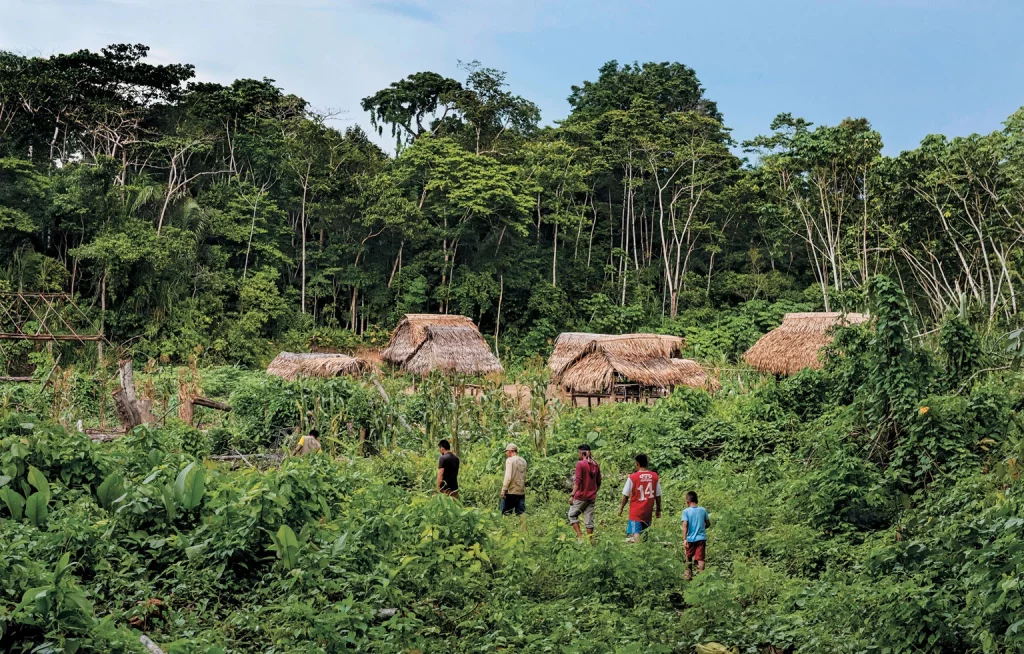Exploring Indigenous Traditions in the Amazon Rainforest
The Amazon Rainforest, often referred to as the “lungs of the Earth,” is not only a biodiversity hotspot but also a cultural treasure trove. Its indigenous communities have lived harmoniously with the land for centuries, developing rich traditions that embody deep respect for nature and a profound understanding of its resources. Exploring these traditions offers a window into a way of life that remains largely untouched by modernity and provides invaluable lessons in sustainability, spirituality, and community.
1. Connection to the Land
For Amazonian indigenous peoples, the rainforest is more than a home—it’s a sacred entity. Their traditions are rooted in an intimate relationship with the environment, where every plant, tree, and animal holds spiritual and practical significance.
- Ethnobotany: Indigenous knowledge of the rainforest’s flora is unparalleled. Plants are used for everything from medicine to building materials to spiritual ceremonies. For example, the yagé vine (commonly known as ayahuasca) is used in traditional rituals for healing and spiritual guidance.
- Sustainable Living: Hunting, fishing, and farming practices are designed to ensure balance and minimize harm to the ecosystem. Slash-and-burn agriculture, for instance, is carried out on a small scale, allowing the forest to regenerate.
2. Spiritual Practices and Beliefs
Spirituality is woven into the fabric of Amazonian life. Many indigenous groups, such as the Yanomami, Asháninka, and Kayapó, believe in animism—the idea that all living things and natural elements possess a spirit.
- Shamanism: Shamans, or spiritual leaders, play a central role in indigenous communities. They act as healers, mediators between the human and spirit worlds, and keepers of ancient knowledge.
- Ceremonial Rituals: Rituals often involve music, chanting, and the use of natural hallucinogens like ayahuasca to achieve altered states of consciousness and connect with the spiritual realm.
- Sacred Sites: Certain locations within the rainforest, such as waterfalls, caves, or specific trees, are considered sacred and are used for prayer or offerings.
3. Traditional Knowledge Systems
Indigenous traditions are passed down orally, preserving knowledge about the rainforest’s resources, weather patterns, and animal behavior. This oral tradition ensures that wisdom is tailored to specific environments and remains adaptable over generations.
- Hunting and Fishing Techniques: Indigenous groups use techniques like blowguns with poison-tipped darts or fish traps that work with natural currents. These methods are efficient and eco-friendly.
- Agricultural Practices: The three sisters planting technique (corn, beans, and squash) promotes soil health and ensures a reliable food supply.
- Forest Medicines: Over 25% of modern pharmaceuticals are derived from rainforest plants, many of which were first used by indigenous peoples.
4. Art, Music, and Storytelling
Artistic expressions in Amazonian cultures are closely tied to nature and spirituality.
- Body Art and Textiles: Patterns painted on the body with natural dyes or woven into textiles often symbolize spiritual beliefs, tribal identity, or social status.
- Music and Instruments: Instruments like flutes, drums, and rattles are used in rituals and storytelling. Their rhythms mimic the sounds of the rainforest, blending human expression with nature.
- Myths and Legends: Stories passed down through generations often explain natural phenomena, teach moral lessons, or reinforce community values. For example, many tribes have creation myths involving the forest’s animals and plants.
5. The Role of Community
Community life is fundamental to Amazonian cultures. Decisions are made collectively, resources are shared, and everyone contributes to the well-being of the group.
- Collective Governance: Many communities operate on consensus, with elders holding significant influence due to their wisdom and experience.
- Rites of Passage: Ceremonies marking milestones like adolescence, marriage, or becoming a shaman emphasize communal bonds and cultural continuity.
- Trade and Alliances: Tribes engage in barter systems, trading goods like pottery, tools, and food to strengthen intertribal relationships.
6. Threats to Indigenous Traditions
Despite their resilience, indigenous traditions in the Amazon face numerous challenges:
- Deforestation: Logging, mining, and agriculture destroy habitats and disrupt traditional ways of life.
- Climate Change: Altered weather patterns threaten the delicate balance of ecosystems that indigenous communities rely on.
- Cultural Erosion: Contact with the outside world, including globalization and assimilation policies, risks diluting or erasing traditional practices.
- Land Rights Issues: Indigenous peoples often struggle to secure legal recognition of their ancestral lands.
7. How Travelers Can Respectfully Engage
Exploring indigenous traditions in the Amazon requires sensitivity and respect. Here’s how you can do so responsibly:
- Choose Ethical Tours: Seek out operators that collaborate with indigenous communities and prioritize their well-being.
- Ask for Permission: Always obtain consent before taking photos or participating in rituals.
- Learn and Listen: Approach with an open mind, ready to learn without imposing your own views.
- Support Indigenous Initiatives: Buy crafts directly from artisans, contribute to community projects, or donate to organizations that protect indigenous rights.
- Minimize Environmental Impact: Follow Leave No Trace principles to help preserve the rainforest for future generations.
8. Lessons to Take Home
Exploring indigenous traditions in the Amazon leaves visitors with profound insights:
- Harmony with Nature: Indigenous peoples’ sustainable practices highlight the importance of living in balance with the environment.
- Community Values: Their collective approach to life underscores the strength of interdependence and mutual respect.
- Spiritual Connection: Their reverence for the natural world inspires a deeper appreciation for the Earth’s beauty and resources.
Conclusion
The indigenous traditions of the Amazon Rainforest offer a rare glimpse into a way of life that harmonizes with nature in ways modern society often overlooks. By exploring these traditions respectfully and thoughtfully, travelers can gain not only a richer understanding of the Amazon but also valuable lessons on sustainability, spirituality, and the enduring strength of human connection.

